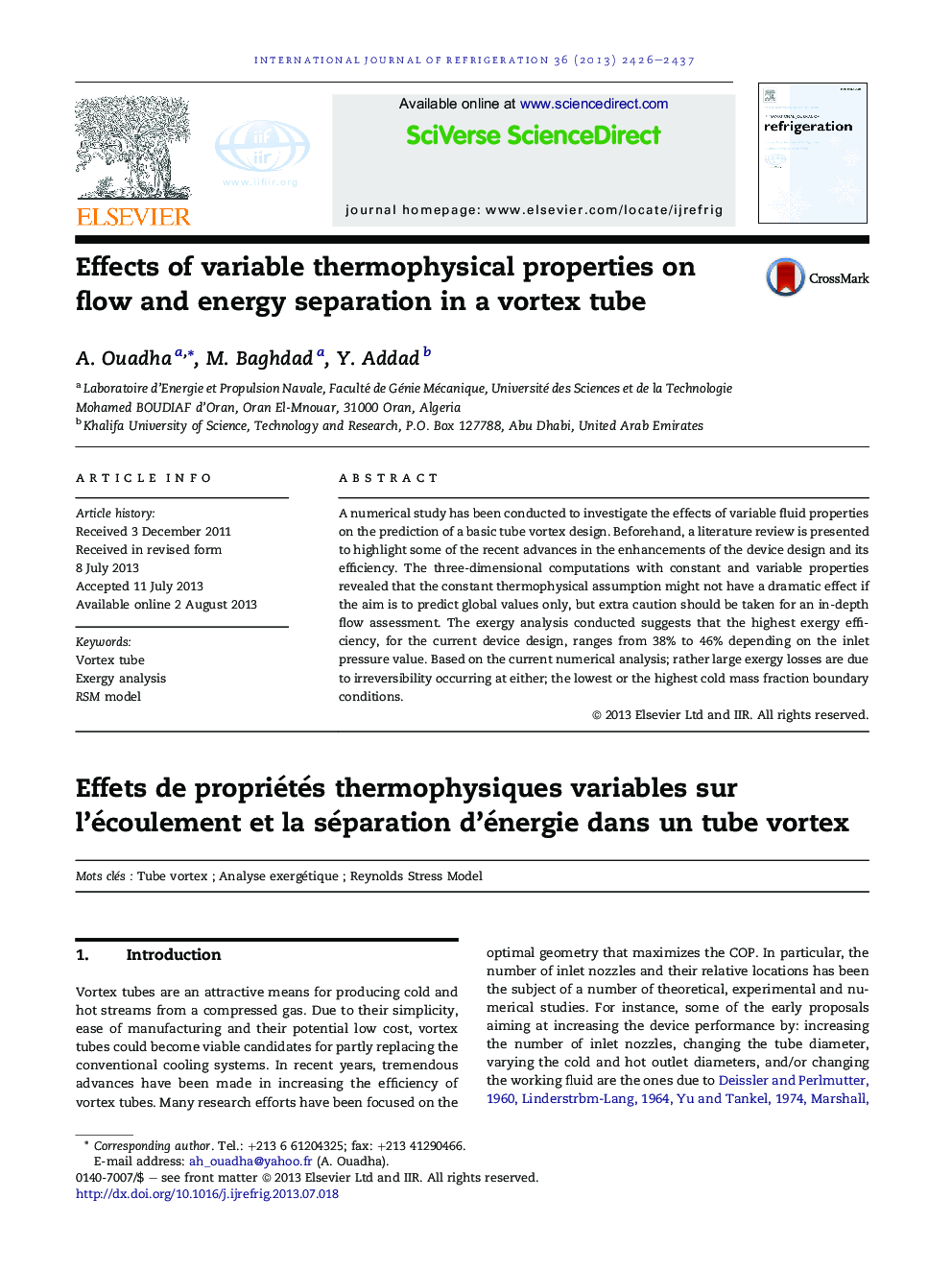| Article ID | Journal | Published Year | Pages | File Type |
|---|---|---|---|---|
| 788738 | International Journal of Refrigeration | 2013 | 12 Pages |
•Energy separation and flow within a vortex tube were studied numerically.•A 3D computational domain was generated considering the quarter of the geometry.•The flow predictions are based upon the RSM model.•Air is selected as the working fluid with temperature-dependent thermophysical properties.•The mean pressure and temperature of the cold and hot exits are used in the exergy analysis.
A numerical study has been conducted to investigate the effects of variable fluid properties on the prediction of a basic tube vortex design. Beforehand, a literature review is presented to highlight some of the recent advances in the enhancements of the device design and its efficiency. The three-dimensional computations with constant and variable properties revealed that the constant thermophysical assumption might not have a dramatic effect if the aim is to predict global values only, but extra caution should be taken for an in-depth flow assessment. The exergy analysis conducted suggests that the highest exergy efficiency, for the current device design, ranges from 38% to 46% depending on the inlet pressure value. Based on the current numerical analysis; rather large exergy losses are due to irreversibility occurring at either; the lowest or the highest cold mass fraction boundary conditions.
